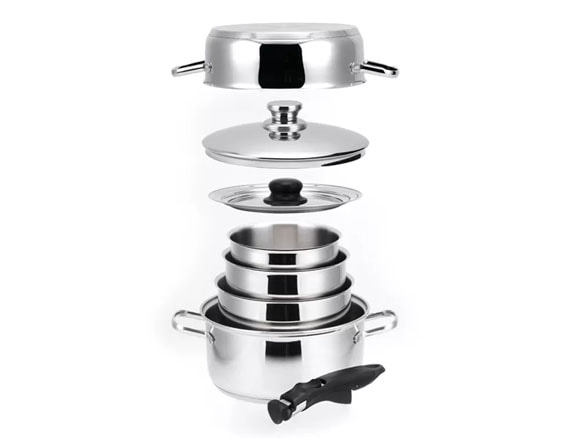How Often Do You Need to Replace Your Stainless Steel Cookware?
Ever wondered how often you should bid farewell to your trusty stainless steel cookware? "How often do you need to replace your stainless steel cookware?" is a query that echoes through kitchens, and rightly so. In the following exploration, we'll unravel the mysteries behind the lifespan of stainless steel cookware, discern signs of wear and tear, and equip you with maintenance strategies. Let's embark on this culinary journey to ensure your kitchen companions stay in top-notch shape.
The Lifespan of Stainless Steel Cookware
Overview of Stainless Steel Durability:Stainless steel cookware has long been celebrated for its durability. Comprising iron, chromium, and nickel, this alloy is not only resistant to corrosion but also presents a polished facade. To understand the lifespan of your cookware, it's essential to grasp the inherent strength of stainless steel.
Factors Affecting the Lifespan:
Maintenance Practices: The key to longevity lies in your maintenance rituals. Regular cleaning, avoiding abrasive materials, and proper storage contribute significantly to extending the life of your cookware.
Cooking Habits: Your cooking style matters. High-heat cooking and the use of metal utensils can expedite wear and tear. Mindful culinary practices play a vital role in preserving your stainless steel companions.
Signs of Wear and Tear
Visual Inspection:A quick visual check can unveil a lot about your cookware's condition. Scratches, dents, or a fading shine may signal structural issues. If your once-gleaming pots and pans are starting to show wear, it might be time for an upgrade.
Performance Indicators:
Loss of Non-Stick Properties: While stainless steel isn't inherently non-stick, many cookware sets incorporate this feature. If your eggs are sticking more than usual, it could be a sign that the non-stick properties are waning.
Corrosion and Rusting: Despite its corrosion resistance, stainless steel isn't invincible. Prolonged exposure to harsh conditions or neglecting proper drying can result in rust. If rust makes an appearance, it's a clear indication that it's time to consider new cookware.
Maintenance Strategies for Prolonged Use
Cleaning Tips:
Avoid Abrasives: Opt for soft sponges or cloths over abrasive scouring pads to prevent scratches.
Proper Drying: Towel-dry your cookware promptly after washing to prevent water spots and potential corrosion.
Storage Recommendations:Handle your stainless steel cookware with care during storage. Use soft liners to prevent scratches, and avoid stacking to minimize dents and dings.
Conclusion
In the kitchen symphony, your stainless steel cookware plays a crucial role. While these kitchen workhorses are designed for durability, understanding how to maintain them and recognizing when it's time for an upgrade ensures a seamless culinary experience. Regular visual inspections, combined with thoughtful cooking and maintenance practices, will keep your cookware shining through countless meals.



